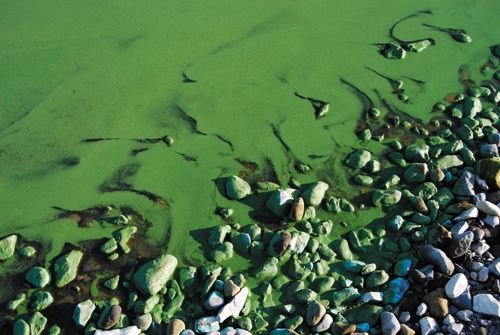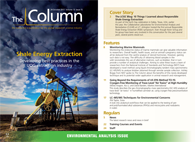New Mass Screening Approach for Algal Blooms
Researchers from The First Institute of Oceanography in Qingdao, China, have developed an exact mass suspect screening approach for identifying multiple lipophilic marine toxins in seawater, suspended particulate matter (SPM), and marine sediment using LC–TOF-MS.
Photo Credit: Sytillin Pavel/Shutterstock.com

Researchers from The First Institute of Oceanography in Qingdao, China, have developed an exact mass suspect screening approach for identifying multiple lipophilic marine toxins (LMTs) in seawater, suspended particulate matter (SPM), and marine sediment using liquid chromatography–time-of-flight mass spectrometry (LC–TOF-MS) (1).
In the recent decade, the frequency and intensity of algal bloom events has increased bringing environmental science to the forefront of the public consciousness once more. Contamination with marine toxins produced by planktonic and benthic microalgae has impacted communities across the world and led to dramatic consequences for public health. Algal blooms such as those which affected and continue to affect Lake Erie in North America-a lake which shores on five US states and Canada, where toxic algae contaminated the drinking water for more than 400,000 people in 2014-are pertinent examples of their potentially devastating impact (2).
Further to the public health concerns, algal blooms can also devastate marine life populations, including prominent markets such as those revolving around shellfish, leading to massive economic disruption. While substantial research has focused on the marine toxins in contaminated bivalves, little is known about the pollution levels of marine toxins in the aquaculture environments in which the shellfish and fish populations need to live.
Aiming to address this lack of knowledge researchers have developed an approach of target analysis and suspect screening to perform rapid identification of multiple LMTs in seawater, SPM, and marine sediment samples by LC coupled to high resolution (HR) MS, and applied this method to screen LMTs in marine environmental samples collected from Jiaozhou Bay in China.
The new method detailed in the journal Chemosphere successfully screened LMTs using LC–TOF-MS combined with an accurate molecular mass list. The method was verified to be precise, repeatable, practical, and was also successfully applied to screen and verify LMTs in seawater, SPM, and marine sediment samples.
References
- J. Chen et al., Chemosphere168, 32–40 (2017).
- https://www.thestar.com/news/world/2017/10/08/lake-erie-algae-bloom-touching-shores-of-ontario-and-two-us-states-is-the-largest-in-years.html

A Matrix-Matched Semiquantification Method for PFAS in AFFF-Contaminated Soil
Published: April 14th 2025 | Updated: April 14th 2025Catharina Capitain and Melanie Schüßler from the Faculty of Geosciences at the University of Tübingen, Tübingen, Germany describe a novel approach using matrix-matched semiquantification to investigate per- and polyfluoroalkyl substances (PFAS) in contaminated soil.
Silvia Radenkovic on Building Connections in the Scientific Community
April 11th 2025In the second part of our conversation with Silvia Radenkovic, she shares insights into her involvement in scientific organizations and offers advice for young scientists looking to engage more in scientific organizations.













